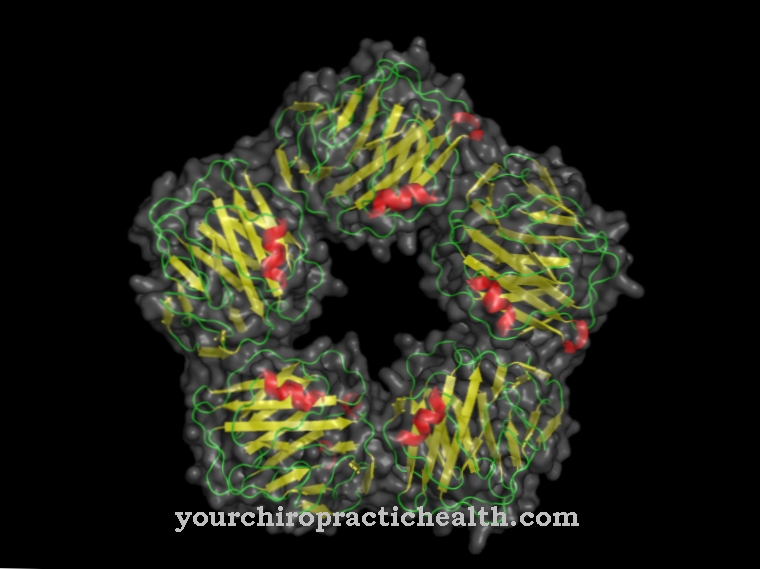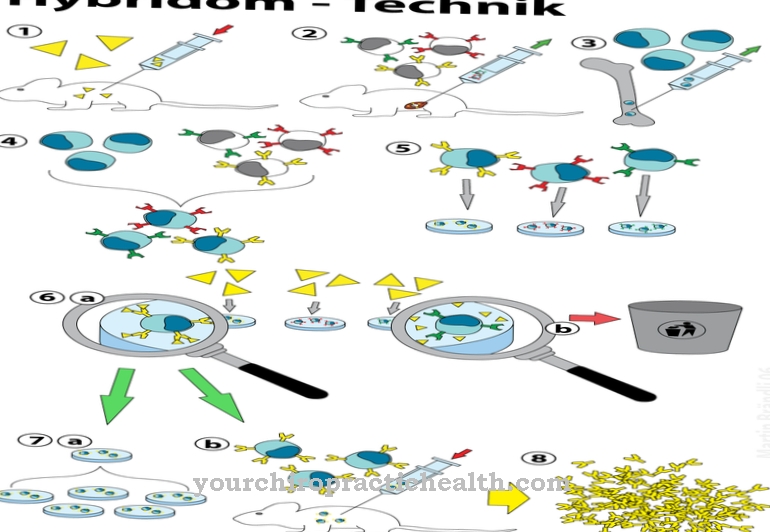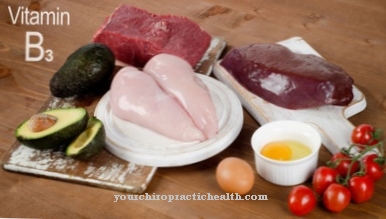The Proteohormones represent the largest group of hormones with various functions in the organism. They consist of chains of amino acids that are linked by peptide bonds and are all water-soluble.
What are proteohormones?
Proteohormones consist of peptide chains of amino acids. Among them are long-chain proteins with a chain length of over 100 amino acids and short and medium-chain peptides with a chain length of up to 100 amino acids. All proteohormones are soluble in water. In the chemical classification of hormones, they represent the largest group of hormones.
As hormones, they are so-called messenger substances, which are formed in endocrine glands or special cells and cause a corresponding effect in target organs. They can be transported to the respective destination via the bloodstream or act in the immediate vicinity. The long-chain proteohormones include the growth hormone somatotropin, thyrotropin (regulates the formation of thyroid hormones) or luteotropin (LH), which is responsible for ovulation in women or for sperm maturation in men.
The medium-chain proteohormones below 100 amino acids include, for example, insulin or glucagon, while the short-chain proteohormones with nine amino acids each include the hormones oxytocin or vasopressin.
Function, effect & tasks
The proteohormones, like the other hormones in the organism, have different functions. All body functions such as blood sugar regulation, food intake, regulation of the water balance and mineral metabolism, digestion, sexual function, brood care, calcium metabolism and much more are dependent on the influence of proteohormones in addition to other hormones.
The proteohormone insulin, for example, regulates the blood sugar level by ensuring that glucose is transported to the individual cells of the body. To perform this function, it docks onto special receptors for insulin, preparing the cell for glucose uptake. The antagonist of insulin is glucagon, which is responsible for breaking down the glucogen stored in the liver into glucose when the blood sugar level is low. Other proteohormones such as leptin or ghrelin regulate food intake by acting on the hunger center. The influence of the leptin produced in the fat cells lowers the feeling of hunger, while the appetite is increased by ghrelin. The vasopressin made up of nine amino acids is responsible for regulating the water balance in the body.
Oxytocin, also with nine amino acids, is released to induce labor. It also regulates brood care and behavior between mother and child as well as between couples. It should also have an overall influence on social behavior. Another proteohormone, gastrin, controls the formation of gastric acid and the release of the enzyme pepsin and is therefore responsible for gastric function. The medium-chain peptides parathyroid hormone and calcitonin raise or lower the calcium concentration in the blood and are therefore the hormones that regulate calcium and bone metabolism.
Education, occurrence, properties & optimal values
Like all other hormones, proteohormones are produced in special endocrine glands or certain hormone-producing cells. Important endocrine glands, which also produce proteohormones, include the pancreas, thyroid, parathyroid and pituitary gland. Hormone-producing cells also exist in the stomach, liver, nervous system and other organs.
For the proteohormones, the synthesis works in the same way as for the other proteins. The genetic code for the corresponding proteins or peptides is defined in the DNA. If necessary, this is read in the responsible cell, whereby the corresponding proteohormone is synthesized. The hormones insulin and glucagon are produced in the islet cells of Langerhans in the pancreas. Insulin lowers the blood sugar level, while the antagonist glucagon increases the blood sugar level. Leptin is produced in fat cells.
The synthesis of the opponent ghrelin takes place in the gastric mucosa or the pancreas. Vasopressin and oxytocin are produced and stored in the nerve cells of the hypothalamus. If necessary, they are then released. Gastrin is a hormone of the gastrointestinal tract and is also produced there for gastric function. In turn, the hormones calcitonin and parathyroid hormone, which are responsible for calcium metabolism, are produced in the thyroid and parathyroid glands.
Diseases & Disorders
Serious illnesses can occur if certain proteohormones are deficient or overproduced. The influence of insulin on the regulation of blood sugar levels is well known and often described. When insulin is lacking or its effectiveness is reduced due to poorly functioning insulin receptors, so-called diabetes develops.
Type 1 diabetes mellitus is always caused by the lack or lack of insulin, for example by the destruction of the islet cells of Langerhans in the pancreas. Type 2 diabetes mellitus is usually an insulin resistance (poorly functioning insulin receptors), which can later lead to a real insulin deficiency.
It is well known that if the attitude is poor, diabetes leads to various diseases such as arteriosclerosis and lipid metabolism disorders. If, on the other hand, the hormones calcitonin or parathyroid hormone do not work effectively, calcium metabolism is disrupted. In addition to many other health problems, bone loss can also occur here. The lack of another hormone, vasopressin, leads to a disruption of the water balance. If vasopressin is missing, so-called diabetes insipidus occurs, in which the body loses up to 20 liters of water every day through urine output. This loss must then be made up by drinking the same amount of water.












.jpg)



.jpg)










.jpg)
